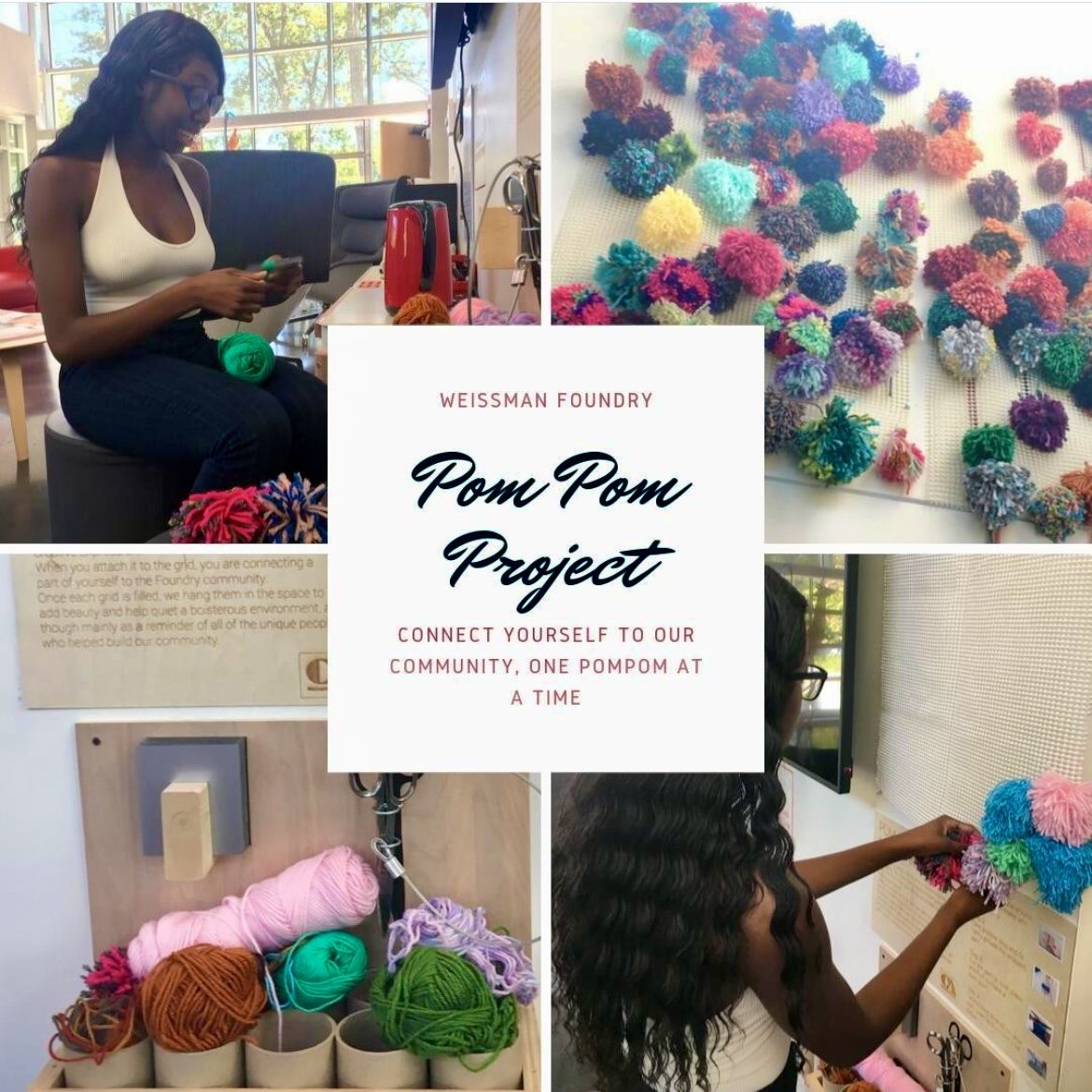
ChallengeHow could we craft an experience that would turn visitors into stakeholders, allowing them to see themselves as an integral part of the Creative Community narrative?
At the Weissman Foundry, the need was clear: to establish an initiative that could seamlessly integrate community members into the creative ecosystem of the Foundry while aligning with its values of inclusivity, innovation, and hands-on learning.
The challenge wasn’t just about designing a project that was fun or engaging but creating one that would resonate deeply with the participants, fostering a sense of ownership and belonging.
The Foundry needed a medium through which individuals could express their identities and contributions while physically anchoring themselves within the space. How could we craft an experience that would turn visitors into stakeholders, allowing them to see themselves as an integral part of the Weissman Foundry's narrative?
ProcessAs participants worked on their pom-poms, the act of making became a communal experience, sparking conversations, fostering creativity, and establishing connections that would extend beyond the project.
Our process began with a simple yet profound idea: teaching the community how to make pom-poms. At first glance, it seemed like an elementary craft, but the potential for personalization and storytelling was vast. We introduced this skill to participants, encouraging them to choose colors and sizes that spoke to their unique identities and experiences.
This wasn’t just about creating an object—it was about crafting an avatar, a tangible representation of who they were. This process allowed each individual to invest a part of themselves into their creation, embedding their personality into the fabric of the Foundry. As participants worked on their pom-poms, the act of making became a communal experience, sparking conversations, fostering creativity, and establishing connections that would extend beyond the project.
SolutionEach pom-pom told a story, and together, they transformed the Foundry’s entrance into a welcoming space that invited others to see themselves within the broader narrative.
The culmination of this process was a dynamic community display in the lobby of the Weissman Foundry, where each pom-pom was hung to create a vibrant tapestry of individual identities. This display was not merely decorative; it was a conceptual and physical manifestation of the community's diversity and collective spirit.
Each pom-pom told a story, and together, they transformed the Foundry’s entrance into a welcoming space that invited others to see themselves within the broader narrative. As new visitors entered, they were greeted by this colorful display, subtly encouraged to add their own story to the mix. The pom-pom project thus became a visual and emotional touchpoint, embodying the Foundry’s ethos of inclusivity, creativity, and connection.
learningsThe Pom Pom project highlights the importance of personal agency in community engagement.
From this initiative, we learned that even the simplest of activities could have profound impacts on community building when imbued with personal significance and creative freedom. The act of making pom-poms became a metaphor for crafting a place within the community, with each participant proudly identifying their contribution, often exclaiming, "That's mine" or "That's me," upon seeing their pom-pom in the display.
This small yet powerful gesture reinforced their connection to the Weissman Foundry and turned the space into a home away from home. The project highlighted the importance of personal agency in community engagement and demonstrated that creativity when channeled through inclusive and accessible activities, could forge deeper, more meaningful connections within communal spaces.